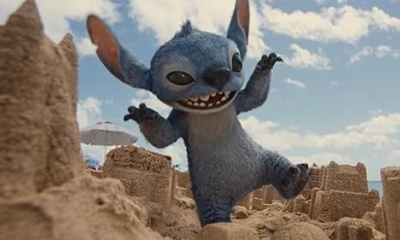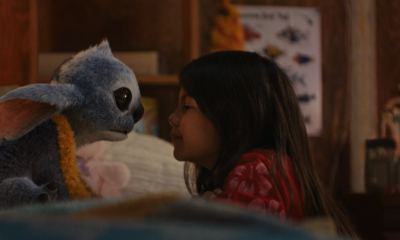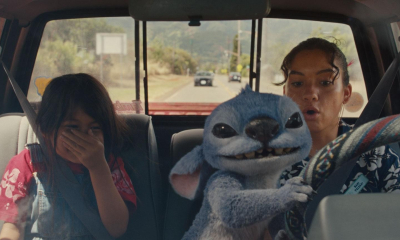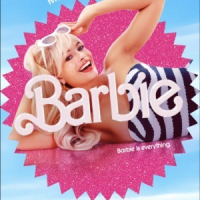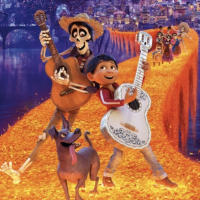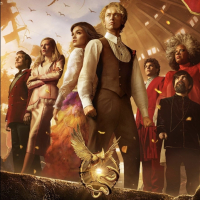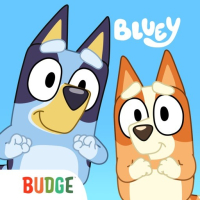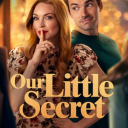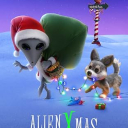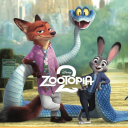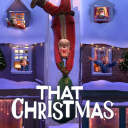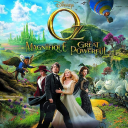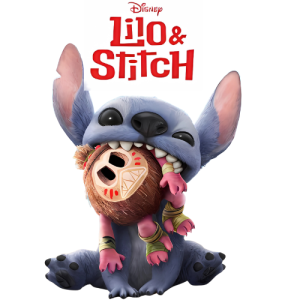
Lilo & Stitch 2025 Review
Aloha, Nostalgia: An Immersive Dive into “Lilo & Stitch” (2025)
The announcement of a live-action adaptation of a beloved animated classic is always met with a particular mix of excitement and anxiety. Disney’s 2025 “Lilo & Stitch,” directed by Dean Fleischer Camp, attempts to walk that high wire, bringing the heart and weirdness of its original animated counterpart into a new medium. In this extensively detailed review, I’ll analyze what sets this adaptation apart, how it fares in the modern era, and whether it justifies the inevitable conversations about how and why we revisit childhood favorites.
Revisiting Ohana: The Challenge of Living Up to a Classic
Animation fans know “Lilo & Stitch” as a singular, offbeat entry in Disney’s early-2000s revival. It combined slapstick science fiction, the gravity of family separation, and the breezy energy of Hawaiian life. The transition to a live-action/CGI hybrid trades some of the original’s painterly flair for tactile realism; Big Pacific waves seem pounds heavier, the sand grains stick, and sunlight dapples skin more convincingly than ever.
One immediate achievement: the filmmakers have honored the original’s deep sense of place. Far from a sterile recreation, Kauaʻi emerges with its own moods and rhythms. The new adaptation wisely steers clear of postcard kitsch, exploring quieter corners of island life—from busy local markets to overgrown jungle paths, all pulsing with the unpredictable lives of real people (and one blue, chaotic experiment).
Character Evolution: A More Grounded Lilo and a Technically Remarkable Stitch
Casting is often where adaptations falter, but here, young Maia Kealoha delivers a Lilo who’s vivid and dimensional. Her idiosyncrasies are less exaggerated for comic relief, replaced with subtler strokes: her loneliness, her disjointed attempts at friendship, her small-scale rebellions. This more naturalistic approach grounds the central relationship even as the story gets wildly fantastical.
Opposite her, the new CGI Stitch is as much a technical marvel as he is a recognizable character. The design rides a delicate line. Too cartoonish would clash with the live-action background; too realistic could risk plunging us into uncanny territory. Yet, the digital artistry in Stitch is astonishing—matted fur, frenetic movement, expressive eyes. Much like Paddington or Sonic before him, Stitch is both alien and convincingly part of the photographed world.
Original supporting characters like Nani (Sydney Agudong) and David (Kahiau Machado) are fleshed out with more backstory and emotional range, avoiding simple caricature. Ving Rhames returns as the voice of Cobra Bubbles, lending the role an immediate gravity—a sly wink for returning fans. The expanded focus on family dynamics and economic stress gives this version deeper contemporary relevance, nestling the fantastic within the sometimes-bleak realities facing working-class Hawaiians.
Updating Themes: From Alienation to the Price of Belonging
The screenplay doesn’t simply retread old beats but subtly modernizes the core themes. The original’s focus on loss, grief, and unconventional families is intact, but with new relevance. Lilo’s feelings of otherness resonate even more sharply—she’s a child obsessed with the offbeat, desperate for connection, unable to “fit in” and fiercely protective of her shaken world. Stitch, designed only to destroy, is again a mirror for children who feel unwelcome or misunderstood.
The live-action adaptation pointedly evokes the undercurrents of social isolation in the digital age. There’s a scene where Lilo, after a difficult day, retreats to a ramshackle hideout adorned with VHS tapes, the flickering blue of an old TV screen bouncing off her face. There’s melancholy here, a reminder of how technology can insulate as much as it connects—a new layer for a new decade.
Adult viewers will note a greater emphasis on the economic realities beneath the surface. There are fraught discussions about jobs, social workers, and eviction notices—none of which ever hijack the plot, but which add emotional weight. All of this strengthens the central question: what does it cost to keep your family together in a world indifferent to your struggles?
Spectacle in Small Doses: Science Fiction Grounded in Reality
The slapstick mayhem of the original—Stitch’s gleeful destruction, Jumbaa and Pleakley’s mismatched-cop shenanigans—is preserved, though more judiciously deployed. Rather than overwhelming with CGI spectacle, the film frames its biggest set pieces with restraint. A chase down a rain-slicked street, Stitch scaling buildings in pursuit of peanut butter sandwiches, the chaos of Lilo’s hula recital—all benefit from the physicality of live-action stunts and a grounded approach to digital augmentation.
What’s most impressive is that, even with major set pieces, the story resists the urge to become a superhero epic. No citywide destruction or blue sky beams—just the messiness and noise that erupts when an uncontainable force lands in a world governed by rules. It’s a film more interested in small disasters than in saving the world. This restraint serves both the plot and the tender emotional through-lines.
Visuals, Sound, and the Quest for Authenticity
Much has been written about the challenge of blending CGI characters with real actors without sacrificing immersion. Here, the interplay between natural lighting, digital compositing, and performance is handled with uncommon delicacy. Stitch is luminous under Hawaiian sunlight, his features catching droplets of water, his shadow flickering off banisters as he tears through hallways.
The soundtrack once again leans on a mixture of Elvis Presley (yes, the King’s hits return in bass-thumping live-action renditions) and traditional Hawaiian music. The score finds a balance between the lo-fi charm of the original and a more contemporary warmth. The authentic representation of Hawaiian culture is more front-and-center, resulting in a world that feels lived-in, not just picturesque.
Where some may find the adaptation visually subdued compared to 2002’s watercolor backgrounds, others will appreciate how director Camp lets the real world breathe, allowing moments of silence, awkwardness, and wonder to settle. The visual language is less frenetic but more evocative, leaning toward understated emotional highs rather than dazzling visual tricks.
Does It Succeed as a Reimagining?
The foremost question is whether this new “Lilo & Stitch” stands on its own. There’s no denying it trades some of the anarchic energy and outright slapstick of its predecessor for finer emotional shades and subtle cultural context. Younger viewers may find sections noticeably quieter or more contemplative, but for longtime fans—especially adults—the film’s maturity will be a welcome surprise.
For families seeking something heartfelt to watch together, or anyone hoping to stream a movie that balances nostalgia with fresh perspective, this 2025 adaptation offers both comfort and insight. It’s an invitation to reexamine what “family” means, how outsiders become insiders, and why stories of love and belonging never lose their power.
Unlike certain recent remakes, “Lilo & Stitch” feels less like a cash-in and more like a deeply considered translation. Whether viewed online late at night, enjoyed free during a promotional period, or downloaded for a weekend movie night, this adaptation is a testament to the continuing evolution of family films in the streaming era.
Pros
- Grounded, emotionally rich performances, particularly from Maia Kealoha as Lilo
- Remarkably lifelike and expressive Stitch integrated into live-action scenes
- Honest depiction of family, economic hardship, and personal loss
- Thoughtful, contemporary update of original themes for a new generation
- Authentic sensation of place and culture, avoiding clichés
- Restraint in visual effects, focusing on intimacy over spectacle
- Balance of nostalgia and freshness for both old fans and new viewers
Cons
- Quieter, slower pace may lose younger viewers expecting nonstop action
- Some moments feel visually flatter compared to the animated original
- Not all supporting characters get the full depth of treatment
- The emotional intensity may be heavier than typical family fare
How to watch Lilo & Stitch (2025) online
The new “Lilo & Stitch” (2025) is currently available to watch online on Disney+, requiring a subscription to stream. While it is not offered free on any major platform at release, subscribers may download the film for offline viewing within the Disney+ app. The movie carries a US PG age rating for thematic material and mild peril, making it suitable for most children and families with parental guidance.
The film is not unblocked for free access on platforms like Netflix, Amazon Prime Video, Hulu, or Peacock at this time. On Amazon and Apple TV, viewers can rent or purchase “Lilo & Stitch” for an additional fee, with options to download for offline enjoyment in high quality. Hulu and Peacock do not currently include the title in either their basic or premium subscription catalogs. YouTube Movies offers the film to rent or buy, with the convenience of streaming or watching on the go through the app. Always check the platforms for the latest availability, download options, and possible free trials.
Screenshots
